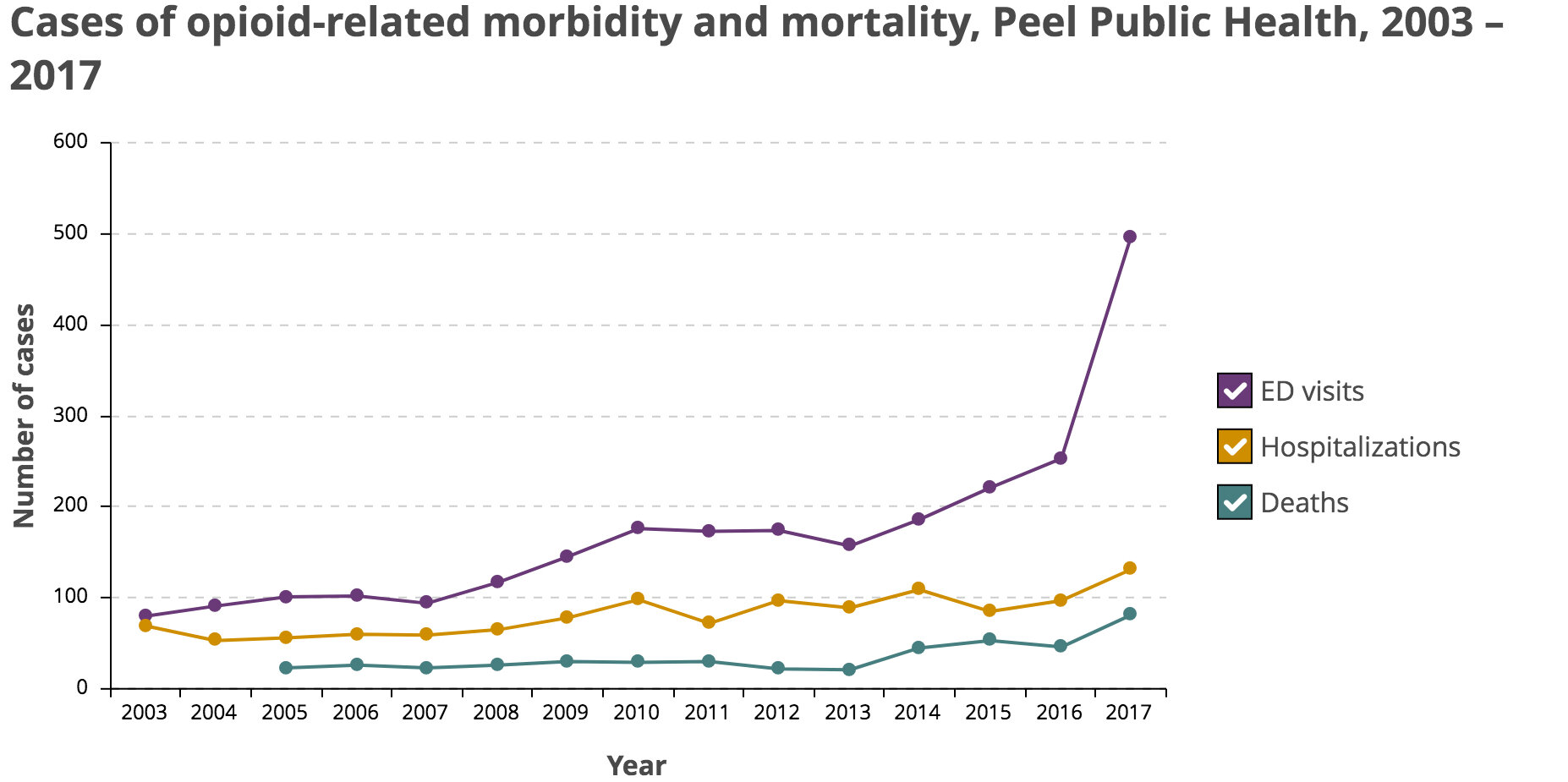Axing of addictions program comes when Peel may need it most
Peel’s program had a $900,000 budget. The need for such a program in the region is sure to grow as Peel deals with the ongoing crisis of addiction to opioids, which for many people begins as a simple prescription for pain relief. Rising numbers related to opioid emergencies and hospital visits received no mention in the region's report.
According to data from Peel Public Health, the region saw 496 emergency department (ED) visits related to opioids in 2017 (the latest year for which complete data is available). This is not only an unsettling 96 percent increase over the 253 ED visits in 2016, but a shocking 520 percent increase from 2003 numbers. Through nine months of 2018, Peel experienced 254 ED visits related to opioids. The numbers suggest that as more people struggle with opioid-related addictions, there will be a bigger need for programs that help them get back on their feet, not less.
The provincial government says it’s chopping a program to help people with combined mental health and addiction issues find jobs because it’s not working.
But some municipalities that have formally assessed the Addiction Services Initiative’s success in getting people off social assistance beg to differ.
Published on July 19, 2019 in The Pointer - Brampton


